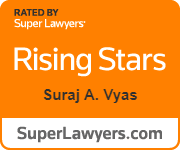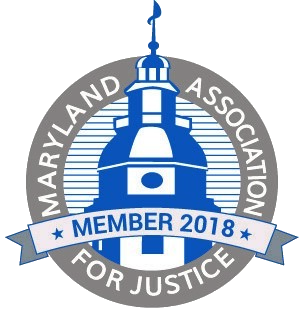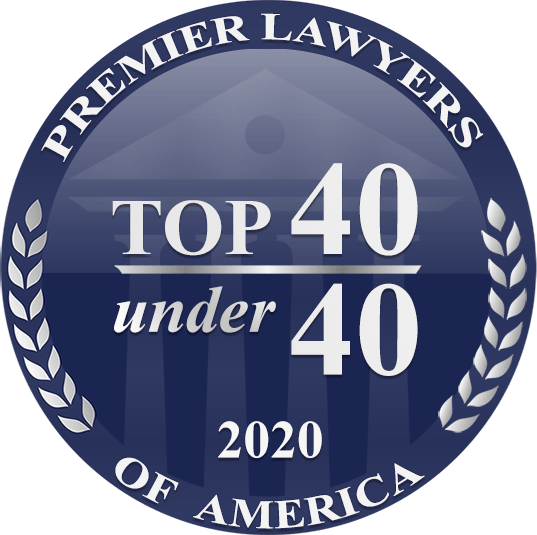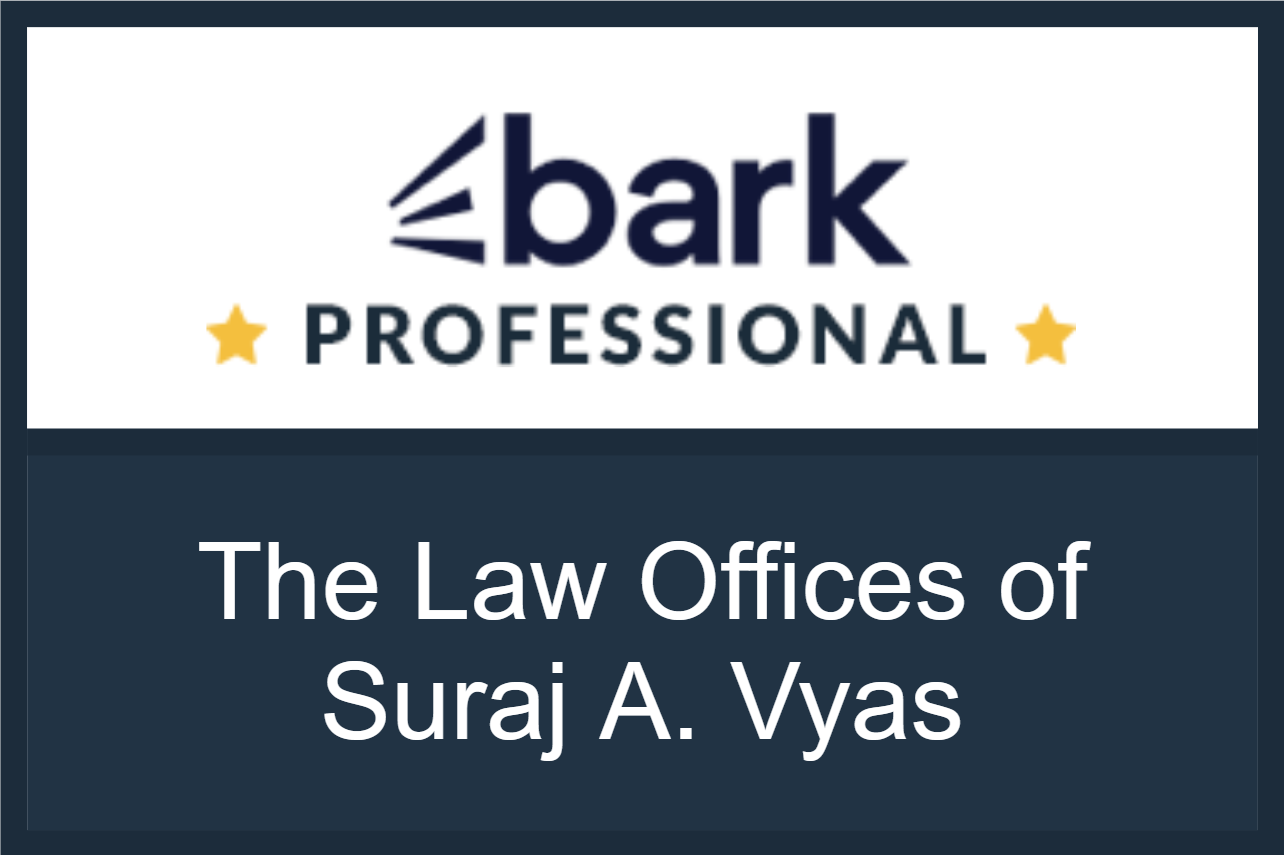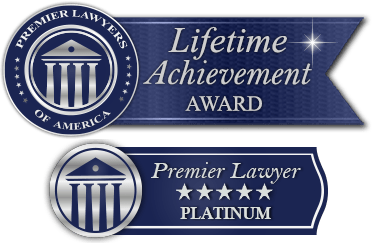Patent law experience
Patent it or lose it.
Intellectual property consists of more than just saying you can work on patents, trademarks, and copyrights. To put it into perspective, there are only around 35,000 patent attorneys registered to practice before the United States Patent and Trademark Office (USPTO). Many attorneys claim to practice patent law, but are not actually registered to prosecute patents before the USPTO. In order to qualify to even take the patent bar, an applicant must have a background in a field of science, technology, engineering, math, or the like. Suraj Vyas is proud be among the few able to say they specialize in patent law and adheres to the additional rules of professional conduct. Suraj’s background in engineering allows him to draft patent applications in a way that allows you to relax while he handles the terminology, procedures, and the following of over 3,000 pages of law found in the Manual of Patent Examining Procedure (MPEP). Patent law is a highly technical area of the law filled with legal jargon. The MPEP is so rigid that a mere period or colon in a claim could result in a completely different meaning than intended. The MPEP is so unforgiving that loosely and incorrectly using transitional words like “comprising,” “consisting,” “including,” and “containing” or “about” versus “preferably” can change the entire meaning of your patent. The MPEP is so strict about language that the word “means” could alter your invention from a method into an apparatus. Patents can be truly metamorphic for someone (and even the world). It cannot be overstated how crucial it is to make sure a patent application is done properly because you may not get a second chance. Ideas are spread across social media faster than ever and securing a patent is more lifechanging than ever before. The person entrusted with drafting a patent application must be meticulous. Suraj will do the job correctly and make sure an applicant has the best possible opportunity to secure their patent or handle an interference or derivation proceeding so they can protect their rights and continue to keep those rights by timely paying any required maintenance fees to the USPTO.
patent prosecution
From the filing date to the Notice of Allowance, a patent is not something to take lightly. You do not get many shots at a patent and it is essential to work with a diligent attorney (who understands what the USPTO is looking for) right from the beginning. Mr. Vyas completely understands the process of patent prosecution and regularly teaches exactly how to go about drafting a patent application and claims in a way that is more likely to overcome any possible anticipated claims or obviousness rejections, pass all of the tests for an invention, and ultimately be approved by the USPTO. Mr. Vyas is familiar with the entire process and can get started no matter where you are in the process. Regardless of whether you need to know how to go about overcoming prior art in your patent application or filing a continuation, Mr. Vyas can handle it. Title 35 of the United States Code governs patent law. It is an elaborate law filled with archaic language (especially in the “prior art exceptions” section) that should not be taken lightly. It is critical to work with an attorney who has studied this law, and who is licensed by the USPTO to actually prosecute patents and know how to overcome specific rejections (such as filing different forms of affidavits to overcome obviousness rejections or different prior art rejection types). The rules are constantly changing and it is paramount to find an attorney who understands these changes. While many other attorneys still think secret sales are not considered to be prior art, Mr. Vyas is well aware of this kind of monumental shift in patent law. While many other attorneys fail to understand how they need to change how they draft client’s applications to keep in line with the Leahy–Smith America Invents Act’s (AIA) fundamental altering of prior art characterization (and patent law as a whole), Mr. Vyas is keeping up with the most recent changes in the world of patent law and leverages his knowledge of both plain meaning and technical jargon to ensure your patent covers the widest possible range of inventions while properly following the procedures regarding range limitations or relative terminology as applicable. While other attorneys may insist on filing on paper and waste time on the associated antiquated rules about facsimile, Mr. Vyas understands how to use USPTO’s Electronic Filing System (EFS) in order to get you the earliest filing date possible for your invention. While other attorneys miss deadlines and cost their clients entire patents, Mr. Vyas has systems in place to properly organize timelines and deadlines for your application. Mr. Vyas can fight for your patent and overcome a variety of rejections through his system of performing research ranging from finding non-analogous art to proving experimental use of an invention to leveraging his analytical skills and arguing the concepts of reduction to practice and reasonable diligence. If you are facing possible arbitration or in the midst of a settlement related to a patent, Mr. Vyas can handle that as well. You can learn about alternative dispute resolution services offered by clicking here and contract law services offered by clicking here.
Design patents
While a utility patent protects the way something works, a design patent protects the appearance of a particular manufactured object for 15 years. It is important to be sure you follow the strict guidelines of MPEP claim drafting in order to get your design patent granted because design patent requirements deviate drastically from those of utility patents. In fact, design patents are limited to only a single claim and that claim must be drafted according to the law. Mr. Vyas is capable of prosecuting design patents and can advise on whether your design is patentable before you spend time, money, and effort on something that may not be patentable.
plant patents
Only certain kinds of plants can be patented and specimens may be required. Mr. Vyas is capable of prosecuting plant patents and is able to help distinguish what makes a particular plant of yours patentable. Much like any other patent, plant patents have their own requirements which must be met in order to have a patent issued. Biotechnology patents sometimes include an accompanying plant patent as well.
Appeals
An appeal brief must be timely filed or you risk abandonment of your patent application. Unlike most of patent law, the 6 month rule does NOT apply to appeals. You need to have an attorney organized and familiar enough with the appeals process so they can flawlessly hit deadlines without issue. Under the law, the brief must set forth specific items in order to be accepted. If the brief is defective, you will have 30 days to fix the non-compliance. Appeals may also include an oral hearing which Mr. Vyas can attend. Appeals are extremely serious and must be dealt with accordingly. Mr. Vyas can go through the entire appeal process with you including if it ends up going outside of the USPTO into a more formal court setting.
final rejections
As scary as a Final Rejection may sound, it may not actually be as “final” as the USPTO may have you believe. The phrase is just another bit of legal jargon that an experienced attorney would know how to sort out. Mr. Vyas can guide you through the patent prosecution process. He knows how to handle a Final Rejection in numerous ways depending on your particular patent. Mr. Vyas can help you avoid abandoning an application in response to a Final Rejection by: (1) Filing a response to which the examiner agrees to place the application in condition for allowance; (2) Filing a notice of appeal; or (3) Requesting the examiner to convert the action to a non-final action. If an application has become abandoned due to a Final Rejection, Mr. Vyas can assist with that as well. It is important to note that a continuation is not a response since it is a separate application. An request for continued examination (RCE) is not a response either since the application is essentially resuscitated for another round of prosecution. As such, filing those actions do not per se avoid abandonment, but they still get rid of the constraints of a Final Rejection. Remember, you are abandoning an application NOT an invention.
Abandoned applications
Mr. Vyas is capable of handling applications that are about to be abandoned. In fact, he can likely prevent the abandonment of the application. In the event an application has been unintentionally abandoned, Mr. Vyas can file a Petition to Revive and respond to any outstanding office actions. There is no time limit to revive. A proper Petition to Revive will include the required reply (including a missing fee if the abandonment as from nonpayment), the USPTO-required fee, a statement that delay was unintentional, and any necessary terminal disclaimer (and the USPTO-required fee). A terminal disclaimer is required for all design patents, but is only needed for utility and plant patents filed prior to 6/8/1995. A terminal disclaimer may also be used to overcome an obviousness rejection revolving around “double patenting” when and old patent and new patent are commonly owned. In the event, you have already attempted to revive an application yourself and come up short, Mr. Vyas can timely request reconsideration of the decision made on a revival petition.
small and micro entities
Mr. Vyas can advise on whether you qualify for small entity or micro entity status at the USPTO. Large entities (meaning more than 500 permanent or temporary employees) are required to pay far more in fees to the USPTO. If you do qualify, Mr. Vyas can file the necessary paperwork and save you 50-75% of most of your USPTO fees. It’s important to keep this information up to date at the USPTO in order to avoid future penalties so it’s important to work with an attorney, like Mr. Vyas, who has procedures in place to ensure savings like this do not fall through the cracks.
Joint Research Agreements
In this more connected world, joint research agreements are becoming increasingly popular. Mr. Vyas understands and can help steer you or your company in the right direction in order to ensure patent rights are owned appropriately. It could be detrimental to have an inventor come out of the woodwork and throw a wrench into your application process. These items need to be handled early on in order to reduce the likelihood of future lawsuits and, thus, a smoother patent prosecution experience. Many times, joint research agreements also have issues surrounding one’s duty of disclosure. Every person related to the patent must understand who has a duty of disclosure to the USPTO and how they must disclose what they know. An Information Disclosure Statement (IDS) is one way to go about fulfilling this duty, but it’s important to make sure it is filled out properly and, at the very least, the minimum requirements set forth under the law are met.
Foreign priority
Mr. Vyas can navigate the confusing and turbulent waters of leveraging foreign priority in your Application Disclosure Statement (ADS) or procuring a Certificate of Correction for your foreign priority claim. Not only are there rigid timelines that must be followed (such as the timely filing of a certified copy of your foreign application), but proper documentation musts be submitted in order to assure you get a proper filing date for your patent. Any deviation from the rules could result in the abandonment of a patent application or your inability to file an application at all. It’s important to move quickly and early in order to assure you are not mistakenly giving up your rights to a patent. In the world of patent law, one day can make all the difference. Mr. Vyas can even assist with international applications and explain the intricacies of the national and international stages and phases of patent prosecution while ensuring you secure your earliest possible filing date. Although the Patent Cooperation Treaty (PCT), the Hague Agreement on Industrial Design, and the Patent Prosecution Highway (PPH) provide more efficient means of being patented worldwide, it’s important to follow protocol or risk losing your rights in both domestic and international territories. Applications receiving PPH are allowed the same extensions of time and Patent Term Adjustment (PTA). However, PTA only applies to utility or plant applications issuing from applications filed on or after 5/29/2000, including a continuation or Continued Prosecution Application (CPA). PTA applies to administrative delays in the following: (1) >14 months from the initial filing to Notice of Allowance or first office action or written restriction requirement or examiner’s request for information; (2) >4 months to reply to amendment or appeal (from the receipt time); (3) >4 months to act after decision by the Patent Trial and Appeal Board (PTAB) or the Court of Appeals for the Federal Circuit (CAFC); or (4) >4 months to print the patent once the issue fee is paid and all outstanding issues are satisfied (for example, filing of formal drawings). Keep in mind that PTA can be reduced by your delay (but can, of course, never become negative).
protests
Any member of the public can file a protest against the issuance of any patent application. Mr. Vyas understands the protest mechanism and is able to accomplish tasks that will likely end up in the application file itself and being considered by the examiner. Of course, this is more difficult post-publication, but it is still something Mr. Vyas can handle. Mr. Vyas can also guide with protest-related work throughout the pendency of a reissue. It is important to work with an attorney who is familiar with the reissue process regardless of which side of it you are on so that you can save time and money. For example, a reissue filing must include (among other things) the written consent of the assignee to the reissue if the original inventors signed the declaration or oath. Mr. Vyas knows that no such consent is required if the oath or declaration was signed by an assignee via a Substitute Statement. Accordingly, Mr. Vyas will submit evidence to establish title for the recorded assignment without the hassle of tracking down the original inventors if it is not needed. This is just one of many ways you will have a more streamlined experience by choosing to work with Mr. Vyas.
assignment
It’s a great idea to record any kind of transfer or assignment (especially when it comes to patents), but noncompliance with the USPTO and MPEP rules will quickly land you or your assignee in trouble. Even though the recording of an assignment is not a determination by the USPTO that the assignment is valid or effective, it’s generally a wise idea to record assignments. This is because the assignment for issued patents are available to the public and can help easily clear up questions potential business partners may have. They are also useful in cases where there are “second buyers” of a patent. A “second buyer” may get the patent title over a “first buyer” if the “first buyer” fails to record an assignment within 3 months or prior to the second assignment (which ever is later) and the “second buyer” didn’t know about the first sale. Of course, the “second buyer” must be a true buyer (and not someone who is being gifted the title). Mr. Vyas is able to file an assignment for recording at the same time as the patent application is filed in order to maximize efficiency. This is possible by properly drafting an assignment contract that fulfills special patent law requirements. Mr. Vyas is fully capable of drafting a compliant agreement or contract. You can learn more about contract law services offered by clicking here. A recording cover sheet must be submitted as well in order for the recordation to take place. This cover sheet must contain: (1) The name of the party conveying the interest; (2) The name and address of the party receiving the interest; (3) A description of the interest conveyed; (4) Each patent and application number against which the document is to be recorded; (5) The name and address to which correspondence should be sent; (6) The number of patents and applications and the fee amount; (7) The date the document was executed; (8) A statement that the information on the cover sheet is correct; and (8) The signature of the submitting party.
Oaths
Mr. Vyas can submit or teach how to properly submit an oath. An oath requires the inventor to state they are the inventor, that the application was filed with their permission, that they have reviewed and understood the application, and that they acknowledge their duty of disclosure to the USPTO. In a case where you may want to amend an oath, Mr. Vyas can help. Oaths cannot actually be amended even though information disclosed in an ADS (such an address) can be amended. Instead, oaths must be supplemented or replaced. It is critical not to make a mistake when it comes to oaths or you risk abandonment of your patent application.
Visit our Patent Law FAQ for a few answers to basic questions you may have before contacting our firm for more information.
